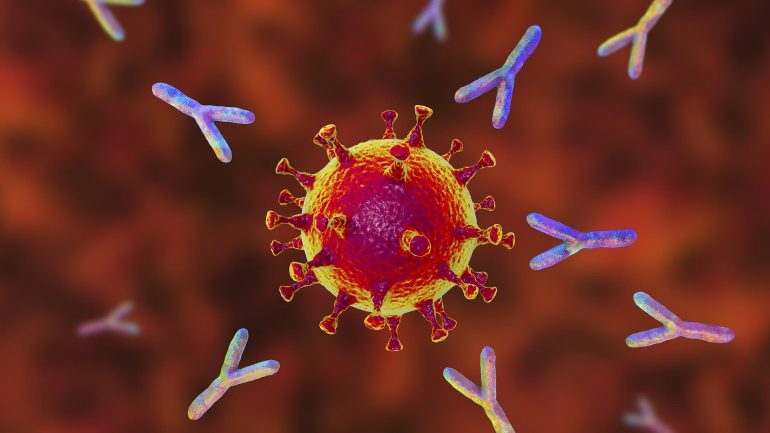role of T cells
In addition to polyclonal antibodies, there is also defense by so-called cytotoxic T cells. They recognize virus-infected cells and kill them to stop virus production. A cytotoxic T cell specifically identifies cells that have been infected with a certain virus – using fragments of virus proteins that are presented on their cell surface by so-called MHC-I complexes. These “presentation plates” have variable binding pockets and show protein fragments from inside the cell – and thus from the invading virus.
“For T-cells to become completely resistant the virus would have to mutate almost all T-cell epitopes for ALL.”(Richard Nehr)
What is presented fits – and these so-called T-cell epitopes are often completely different than the parts of the spike protein that are recognized by antibodies. Therefore the chances of the virus escaping from both antibody and cytotoxic T cells are very small. “Especially when you consider that individuals have different MHC-I complexes for genetic reasons,” says Richard Neher. “The virus would have to mutate almost all T-cell epitopes for ALL to become completely resistant to cytotoxic cells.”
The genes of MHC complexes – and thus the binding sites for virus proteins – are particularly diverse in humans. They are practically identical in identical twins. Similarly, depending on genetics, cytotoxic T cell responses can also be of varying degrees. There are indications, for examplethat some inherited MHC variants in Northern Europeans are associated with increased susceptibility to severe COVID-19 courses, In Israel, however, scientists could not prove such a relationship..
Variants brake each other
The fact that waves of Sars-CoV-2 infection originated from different types has made it more difficult for future versions of the virus to spread effectively. “The next round of types is no longer just an immune response to escape,” says Richard Neher. “For example, there is a greater diversity of antibodies, so that it is not so easy to avoid all the different immune responses at once.”
Many experts believe that Sars-CoV-2 will behave similarly to influenza and other cold viruses in the future. “It is unlikely that the virus will continue to evolve and change its surface proteins so that it can infect people who are already infected,” says Richard Neher. “Then there may be seasonal waves of Sars-CoV-2 infection in autumn and winter, but these will probably be relatively mild because the population will be pre-immune from vaccination and previous infections.”
However, there is another way to specifically alter the genome of influenza that is not found with coronaviruses. In addition to changes caused by continuous mutations, known as antigen drift, you also see abrupt changes in the flu, a so-called antigen shift – there is a complete exchange of genes. The basic immunity in the population against the resulting virus suddenly deteriorates.

Web guru. Amateur thinker. Unapologetic problem solver. Zombie expert. Hipster-friendly travel geek. Social mediaholic.





